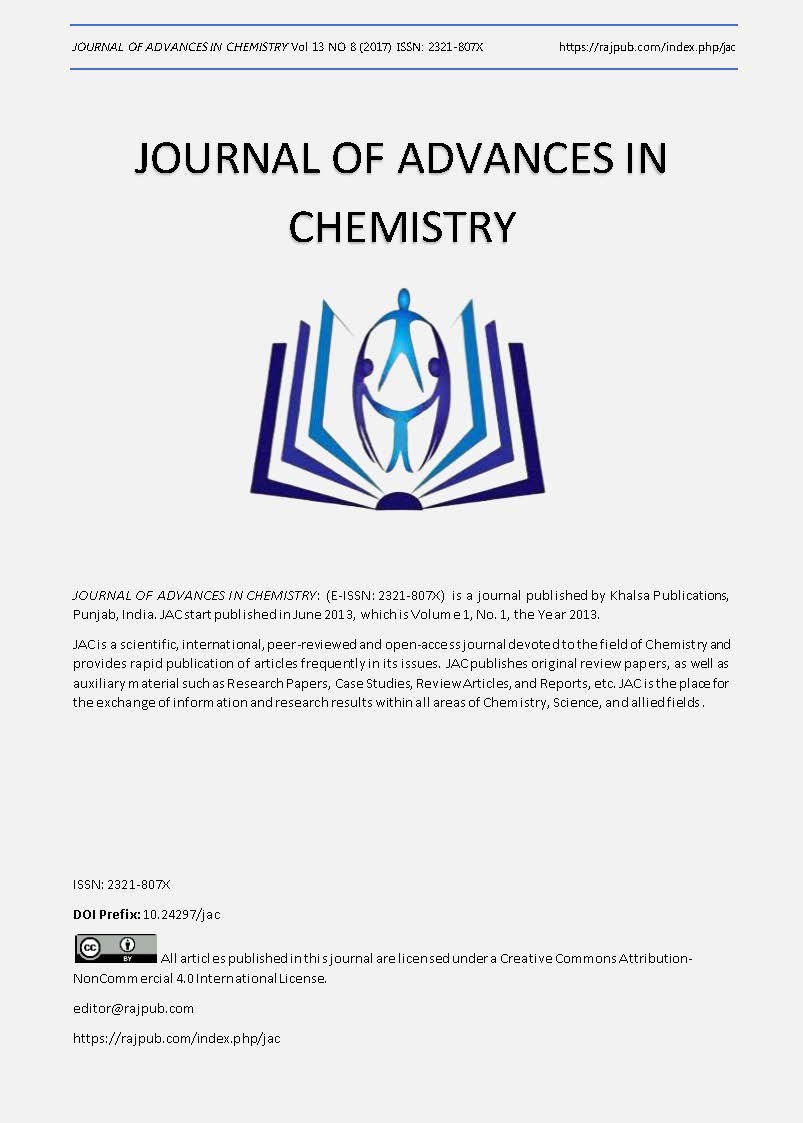AN EXPERIMENTAL INVESTIGATION OF THE EFFECT OF MASS FLOW RATES ON THE PERFORMANCE OF FLAT-PLATE SOLAR WATER HEATING SYSTEM USING CuO/WATER NANOFLUID
DOI:
https://doi.org/10.24297/jac.v13i8.5780Keywords:
Forced circulation, Heat exchanger, Nanofluid, Solar collector, SurfactantAbstract
One of the effective ways of increasing the efficiency of flat plate solar collector is to utilize nanofluids which are having high thermal conductivity. In the present study, an attempt is made to investigate the effect of mass flow rates on the performance of flat plate solar collector using CuO/water nanofluid. The experimental set up consists of flat plate solar collector; storage tank and ladder type heat exchanger. The instantaneous efficiency of solar collector is calculated by taking lower volume fraction of 0.01% with average particle size of 30 nm and varying the flow rate from 1 lpm to 3 lpm, as per ASHRAE standard, with and without Triton X-100 surfactant. The experimental results reveal that utilizing the nanofluid with mass flow rate at 1.5 lpm increases the collector efficiency by 19.7%.Â
Downloads
References
[2] Kaufui V.Wong and Omar De Leon, Applications of Nanofluids: Current and Future, Article ID 519659, Advances in Mechanical Engineering.Vol. 2010.
[3] Peyghambarzadeh S M, Hashemabadi S H, Naraki M, Vermahmoudi Y, Experimental study of overall heat transfer coefficient in the application of dilute nanofluids in the car radiator, Appl.Therm.Eng.52 (2013) 8–16.
[4] Kole M, Dey T K, Thermal performance of screen mesh wick heat pipes using water based copper nanofluids, Appl.Therm.Eng.50 (2013)763–770.
[5]. Mahian et al, A review of applications of nanofluids in solar energy, Int. J. Heat Mass Transfer. 57 (2013) 582–594.
[6]. Natarajan E, Sathish R, Role of nanofluids in solar water heater, Int. J. Adv. Manuf. Technol, 2009. 10.1007/s00170-008-1876-8.
[7]. Mu L J, Zhu Q Z, Si L L, Radiative properties of nanofluids and performance of a direct solar absorber using nanofluids, in: Proceedings of the 2nd ASME Micro/Nanoscale Heat & Mass Transfer International Conference,vol.1,2010,pp.549–553.
[8]. Hua Qing Xie, Wei Yu, Jing Li, Yang Li, Investigation on Heat Transfer Performances of Nanofluids in SolarCollector, Materials Science Forum Frontier of Nanoscience and Technology 694(2011) 33-39
[9]. Mahian Omid, Kianifar Ali, Sahin Ahmet Z, Wongwises Somchai, Performance analysis of a minichannel-based solar collector using different nanofluids, Energy Convers Manage.88(2014)129–38.
[10]. Sheikholeslami M, Ganji D D, Rashidi M M, Ferrofluid flow and heat transfer in a semi annulus enclosure in the presence of magnetic source considering thermal radiation, J. Taiwan Inst. Chem. Eng. 47(2015)6-17
[11]. Sheikholeslami M, Ganji M M, Nanofluid flow and heat transfer between parallel plates considering Brownian motion using DTM, Comput. Methods Appl. Mech.Eng.283(2015)651–663.
[12]. Sheikholeslami M, Hatami M, Domairry G, Numerical simulation of two phase unsteady nanofluid flow and heat transfer between parallel plates in presence of time dependent magnetic field,J.TaiwanInst.Chem.Eng.46(2015)43–50.
[13]. Sheikholeslami M, KKL correlation for simulation of nanofluid flow and heat transfer in a permeable channel, Phys.Lett.A378 (2014)3331–3339.
[14]. Sheikholeslami M, Effect of spatially variable magnetic field on ferrofluid flow and heat transfer considering constant heat flux boundary condition, Eur. Phys. J. Plus 129 (2014) 248.
[15] Saidur R, Meng T C, Said Z, Hasanuzzaman M, Kamyar A, Evaluation of the effect of nanofluid-based absorbers on direct solar collector, Int. J. Heat Mass Transfer. 55(2012)5899–907.
[16] Buongiorno J, Convective transport in nanofluids, J Heat Transfer 2005;128 (3):240–50.
Downloads
Published
How to Cite
Issue
Section
License
 All articles published in Journal of Advances in Linguistics are licensed under a Creative Commons Attribution 4.0 International License.
All articles published in Journal of Advances in Linguistics are licensed under a Creative Commons Attribution 4.0 International License.




